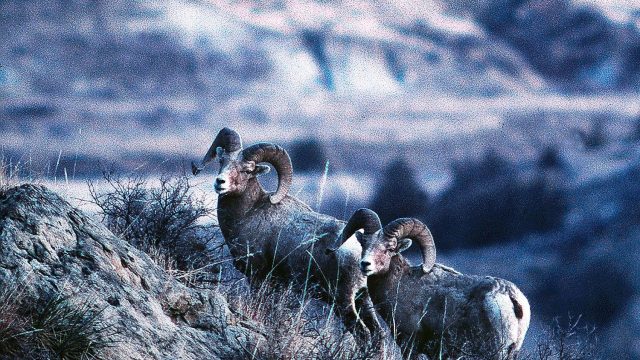Doug Leier: Will Bighorn Sheep Be Available For Hunting In North Dakota Again?

This is the first fall in many years that North Dakota has not had a bighorn sheep hunting season.
Even though the number of licenses has always been low, typically ranging from three to six a year over the last two decades, interest was always high, with odds of receiving one of these once-in-a-lifetime licenses around one in 2,000, plus or minus a few hundred.
While the North Dakota Game and Fish Department did not open a hunting season in 2015, there was considerable interest in the summer bighorn sheep survey, as it would indicate how much a disease outbreak last summer had affected the population this year. That disease outbreak, verified as pneumonia, killed more than 30 sheep prior to the onset of winter.
Each summer, Game and Fish biologists count and classify all bighorn sheep, a process that takes nearly six weeks as biologists locate each bighorn herd in the badlands by tracking radio-marked animals from an airplane. Once a herd is located from that air, biologists hike in on the ground to observe each group from a distance with spotting scope and binoculars.
Biologists then complete the annual survey by recounting lambs in March to determine lamb recruitment, or lambs that survive their first North Dakota winter.
[mks_pullquote align=”right” width=”300″ size=”24″ bg_color=”#ffffff” txt_color=”#000000″]What this fall’s survey showed was that despite the ongoing pneumonia event, North Dakota’s bighorn population increased a modest 6 percent from last year, primarily due to good lamb survival and recruitment.[/mks_pullquote]
What this fall’s survey showed was that despite the ongoing pneumonia event, North Dakota’s bighorn population increased a modest 6 percent from last year, primarily due to good lamb survival and recruitment.
Game and Fish biologist Brett Wiedmann said the survey indicated a minimum of 304 bighorn sheep, which included 87 rams, 159 ewes and 58 lambs. The department’s survey does not include approximately 30 bighorn sheep that live in the North Unit of Theodore Roosevelt National Park.
This year’s slight increase can be attributed to better-than-expected lamb recruitment from 2014, Wiedmann said.
Prior to the summer survey, biologists had not documented any bighorn sheep deaths related to pneumonia since January 2015, but during the latter part of the survey they did observe sheep that were showing clinical signs of the disease.
.
Wiedmann noted that the bighorns showing evidence of disease this summer were from the same herds that were most affected last year. “Unfortunately, these are three of our core herds in the northern badlands, so we’ll have to once again closely monitor the impacts of pneumonia, as many adults and lambs showing signs of disease in August likely will not survive the winter,” he said.
Those herds in the northern badlands that were not affected by last summer’s die-off appeared healthy again this summer, and achieved high female-to-lamb ratios.
Game and Fish wildlife veterinarian Dr. Dan Grove said it is too early to tell the severity. “Since summer 2014, mortalities have not yet been catastrophic,” Grove said. “However, the outbreak is ongoing, and we detected a virulent strain of bacteria last year that was collected from both dead and live-sampled bighorns. Consequently, the recurrence of pneumonia this summer may be more apparent when females and lambs are recounted next March.”
In addition, Game and Fish has documented a couple of sheep deaths over the last few weeks since the survey was completed.
Only time will tell how long or how much the presence of pneumonia will affect the state’s bighorn herd, but that will certainly factor into decisions on whether to hold hunting seasons in the near future.




